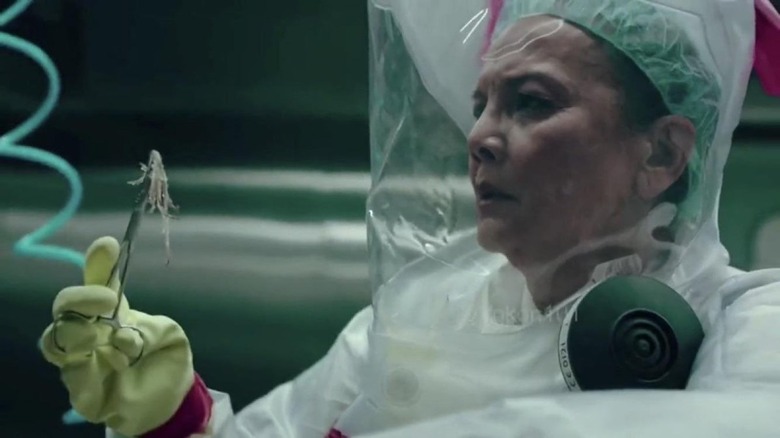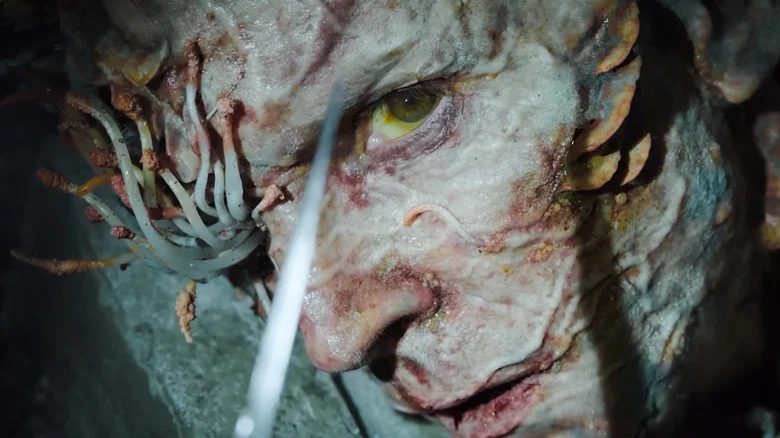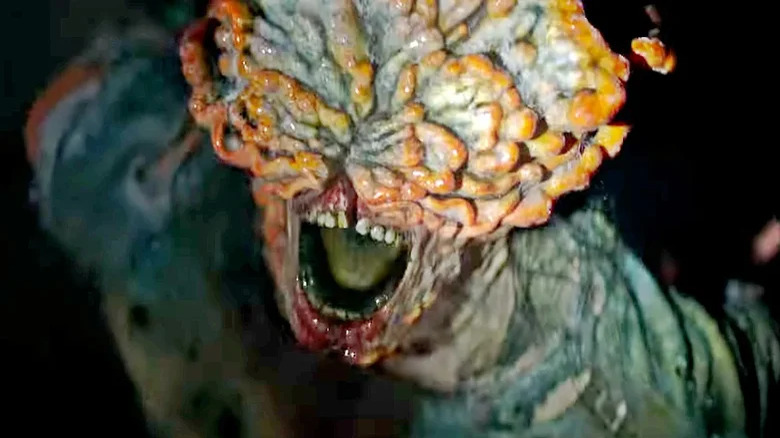The Last Of Us Creators Confirm A Theory About How The Fungus Spread
"The Last of Us" is not only one of the greatest video games of the modern era, it is also the best show of the year so far (yes, the year is just beginning, but still!). The TV series is a phenomenal adaptation, with casting that masterfully embodies the characters, a look that translates the game to the screen exquisitely, and a story that is incredibly faithful to the original. This is a show that is both emotionally gripping and deeply terrifying, as the latest episode revealed.
One thing that makes "The Last of Us" stand out as a zombie story is that its infected are not treated as regular old ghouls. These are not zombies who rise from the grave and bite people, or sick people who get superpowered strength or rabies, but people infected with fungi — scarily alien, terrifyingly real fungi. The adaptation is doubling down on the realness of the fungi, with cold opens in the first two episodes painting a picture of a world pre-outbreak, showing us how scientists across the decades tried to warn us about armageddon, and even tried to stop it before it happened.
One thing the story — whether the game or the show — is never really 100% clear about, however, is how the outbreak really began. We know from a newspaper Sarah finds in the game that Cordyceps originated in South America, eventually carrying over to humans through infected crops and eventually overrunning the Americas, but not how or when that happened or who was patient zero.
Though HBO's adaptation hasn't provided a clear-cut answer, it is more specific than the game on the origin of the outbreak, with the show creators now confirming a popular fan theory that makes this outbreak somehow more real and also scarier.
Humble beginnings
Speaking with Variety, show creators Neil Druckmann and Craig Mazin responded to a fan theory from the first episode, where people noted that Joel and Sarah avoided eating food made with flour — like Joel's birthday cake, breakfast pancakes, and even the neighbor's biscuits. They now confirm that this is indeed how the outbreak began, meaning that birthday cake would have been Joel's last.
"I think it's pretty explicit," Mazin said when asked if the flour theory was correct. "Yeah, we pretty much said yes," Druckmann added.
While Joel not eating his birthday cake was a good yet subtle hint in the premiere, the second episode makes the flour origin story for the Cordyceps crystal clear. We open with a scene set in Jakarta, where a mycologist identifies a dead woman as being infected with Cordyceps, something that shouldn't be possible but apparently now is. Realizing that the world is doomed, the mycologist asks a military officer to just bomb the city to hell, but of course they don't, and civilization ends.
According to Druckmann, the idea was to keep revealing more and more about the origin of the outbreak, and Mazin explained that they wanted to make sure the explanation was based on as much science as possible.
"We liked the idea of that science, and we try as best we can to make sure that our research all connects," Mazin said. "[The mycologist] asks where it happened, and the guy says a flour factory on the west side of the city. We are absolutely talking about — there is the world's largest flour mill in Jakarta — so that's a fine theory and I think people should keep running with it."
Deadly rises
What makes the scene so real and scary is the fact that Jakarta has one of the largest flour mills in the world, so if Cordyceps infected the flour there, the fungi would quickly spread across the planet.
Most zombie films and shows skip the initial outbreak altogether, but the few that do offer an explanation tend to go with viruses, especially ones created in labs that spiral out of control, like in "The Walking Dead" or the T-Virus from "Resident Evil." "The Last of Us," with its focus on fungi, makes the show special and interesting. Not only is the idea of a fungal infection terrifying, but by tying the outbreak to flour, the show ties its fictional apocalypse to something we're feeling the impact of today, given that we're already seeing the effect a grain or flour scarcity has on the world via the Russian invasion of Ukraine, where the latter country provides about 10% of the entire world's wheat market.


